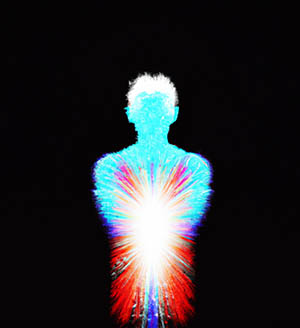The Cultural and Historical Significance of Synesthesia
Cultural Significance
Synesthesia has a rich cultural significance that can be traced back to ancient civilizations. For example, in Hinduism, synesthesia is seen as a divine gift, and it is believed that the god Shiva had synesthetic experiences. Hindu scriptures also describe the sound of the universe as a continuous hum, which can be seen as an example of synesthetic perception.

>In Western culture, synesthesia has been linked with artistic expression and creativity. Many famous artists and writers, such as Wassily Kandinsky and Vladimir Nabokov, were synesthetes and used their synesthetic experiences as inspiration for their work. The art movement of abstract expressionism is also linked with synesthesia, with artists using colors and shapes to create a sensory experience for the viewer.
Historical Significance
Throughout history, synesthesia has been interpreted in different ways, depending on the cultural and historical context. In the Middle Ages, synesthetic experiences were often linked with mystical and religious experiences, and were viewed as a sign of divine intervention or spiritual insight. For example, the writings of Hildegard of Bingen, a German Benedictine abbess, describe vivid sensory experiences that are thought to be examples of synesthesia.
During the Renaissance, synesthesia became more closely associated with artistic expression and creativity. Leonardo da Vinci was known to have synesthetic experiences and used his sensory perceptions as inspiration for his work. The philosopher and poet John Milton also reported synesthetic experiences, describing the colors and shapes he saw in response to music in his work.
In the 19th and 20th centuries, synesthesia became a topic of scientific investigation, with researchers trying to understand the underlying mechanisms of the condition. Early studies of synesthesia focused on its psychological and cognitive aspects, with scientists trying to understand how and why synesthetic experiences occur. Later research focused on the neurological basis of synesthesia, with studies using brain imaging techniques to investigate the neural pathways involved in synesthetic perception.
Contemporary Significance
Today, synesthesia is recognized as a neurological condition that affects around 4% of the population. While synesthesia is not considered a disorder, it is still not fully understood, and many people who experience synesthesia may not even be aware that their experiences are unusual.
The cultural and historical significance of synesthesia has contributed to a growing interest in the condition, with artists, writers, and musicians continuing to use synesthetic experiences as inspiration for their work. For example, the musician Pharrell Williams has described his synesthetic experiences and how they influence his music.
Synesthesia has also gained attention in the field of science and medicine, with researchers exploring the potential applications of synesthetic perception in areas such as music therapy, art therapy, and sensory substitution. For example, some researchers have suggested that people with synesthesia may be able to use their sensory perceptions to help them learn new skills or enhance their cognitive abilities.
Conclusion
Synesthesia has a rich cultural and historical significance that spans across different civilizations and time periods. From its association with mystical experiences in the Middle Ages to its role in the artistic movements of the 20th century, synesthesia has fascinated artists, writers, and thinkers for centuries.
Today, synesthesia is recognized as a neurological condition that affects a significant portion of the population. While much is still unknown about the underlying mechanisms of synesthetic perception, ongoing research is shedding new light on this fascinating phenomenon.
As our understanding of synesthesia continues to grow